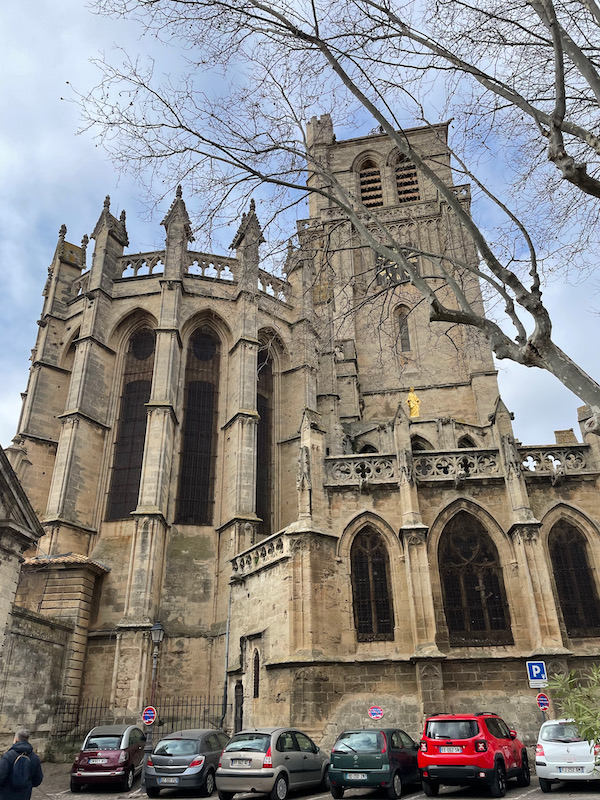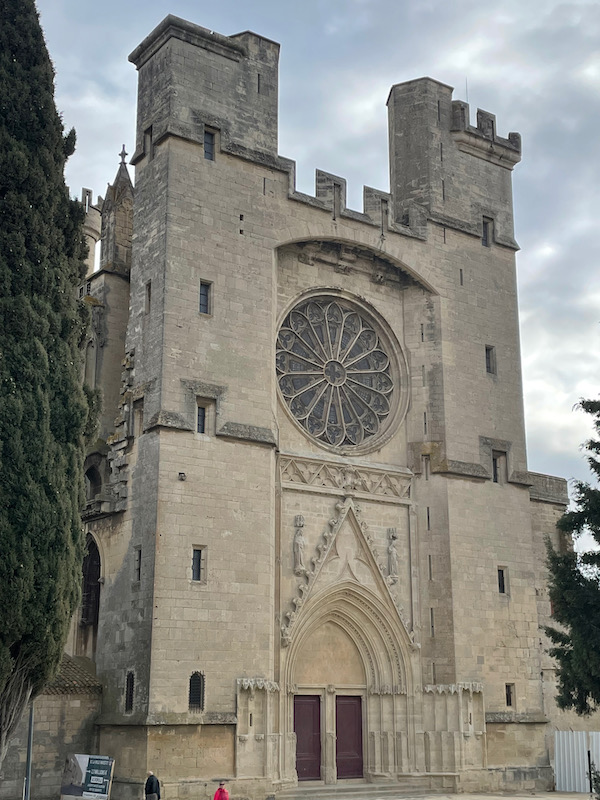Our Blog - Béziers, France
There are many really old cities in France, but Béziers could be the oldest in France, with archeological evidence dating the foundations of the town to the 7th century BC by the Greeks. The first known writing about the town is by the Greek geographer Strabo in the 1st century geographical encylopedia "Geographica" when it was written as Bλίτερα. The Romans then had their Roman city, established by Octave in 36 BC, on the Via Domitia which connected Italy to Spain.
The town has been growing in population recently, but it is still relatively poor ... the annual median income of the inhabitants is almost 40% lower than the annual median income across all of France, and the unemployment rate is double that of France in general. A couple points of trivia: Pierre-Paul Riquet, the engineer who designed and built the Canal du Midi (which runs through Toulouse and we walk Lucy on all the time), was born in Béziers in 1609. And the professional tennis player Richard Gasquet was also born in Béziers.
The Église Saint-Madeleine was first mentioned in 1092. Most of the Romanesque-style church was built in the 11th and 12th centuries, with the bell tower added in the 14th century. Supposedly, it was burned in 1209 during the Albi crusade. At that time, the Papal Legate was reputed to have uttered "Kill them all! The Lord will recognize his own!". The inhabitants, who hid here were "put to the sword". While there are still some Romanesque elements, you will also see some Gothic elements as some of the church was redone in the 14th century.
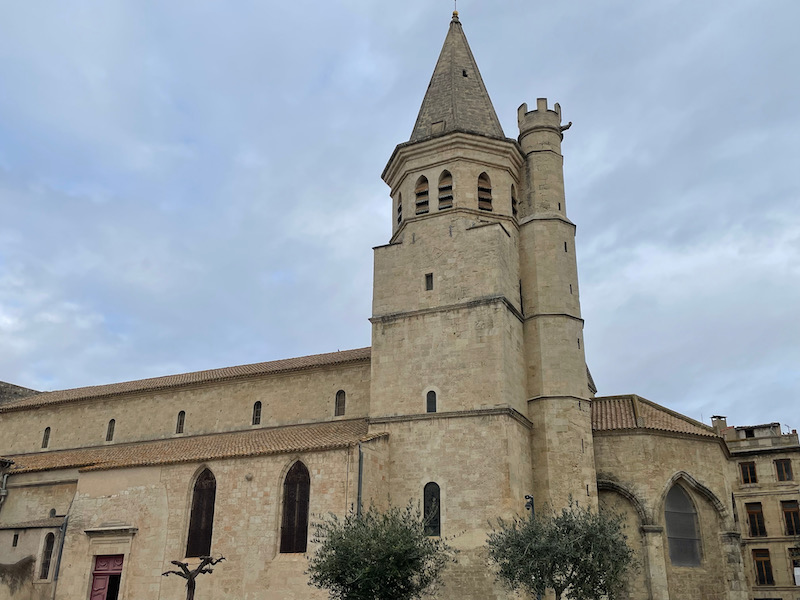
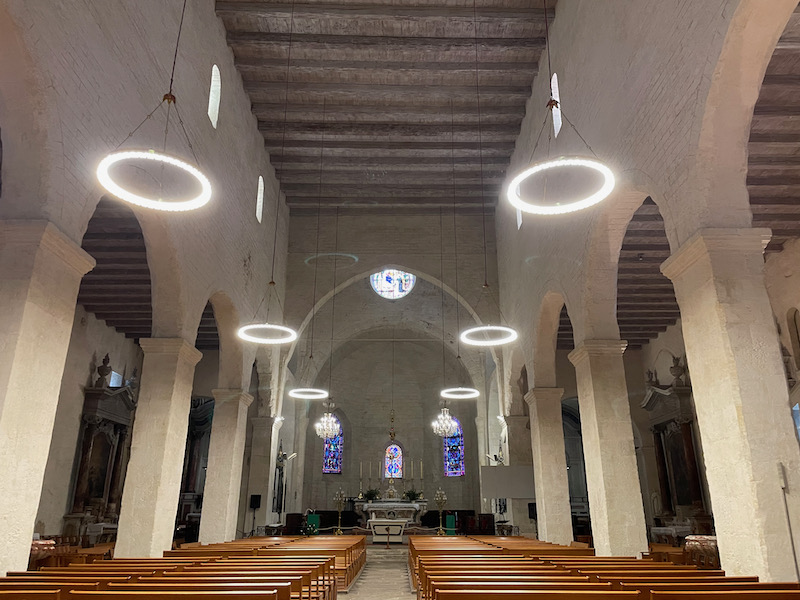
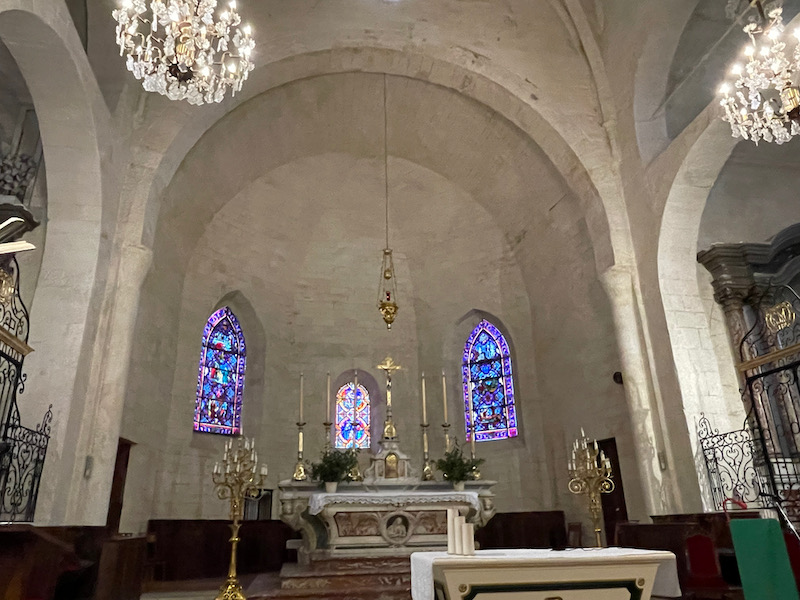
At the back of the church is a huge painting showing the murder of Raymond Trencavel, the Viscount of Béziers, in 1167. On his way back from the war in Provence, a soldier from Béziers took the horse of a noble knight in the viscount's army. The other knights asked the viscount to give the soldier a humiliating punishment. This stirred anger in the population of the city and a meeting was arranged in the church in order to get a public apology. However, this ended in disaster with the people of the town attacking and killing the viscount.
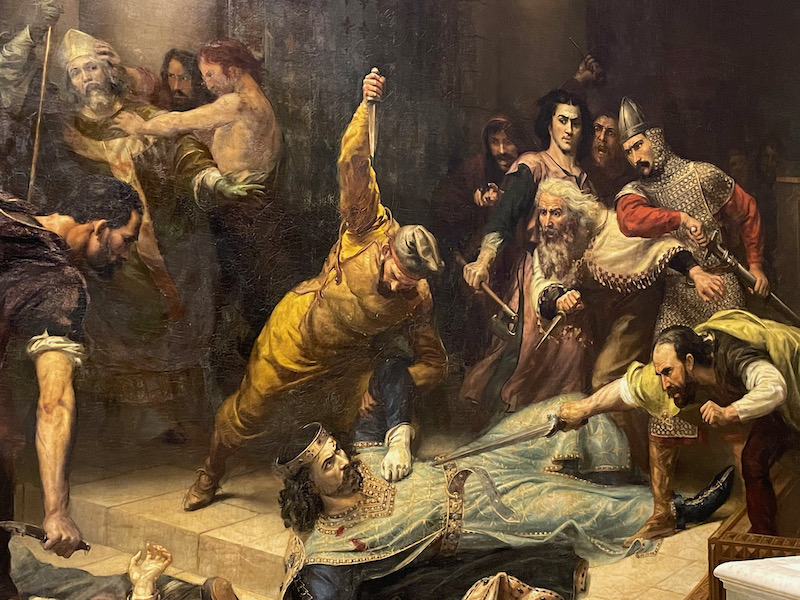
On either side of the main altar are these two side altars. The one with the Virgin is a bit more ornate with a really nice top.
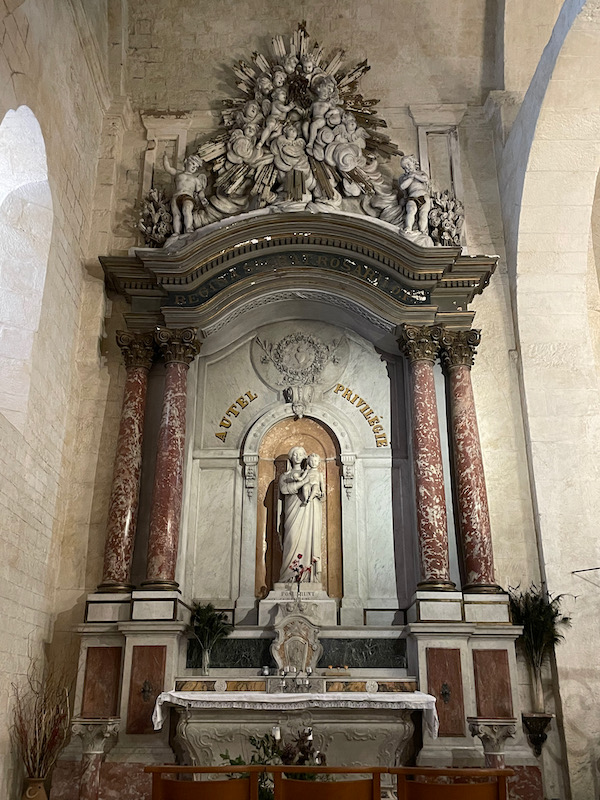
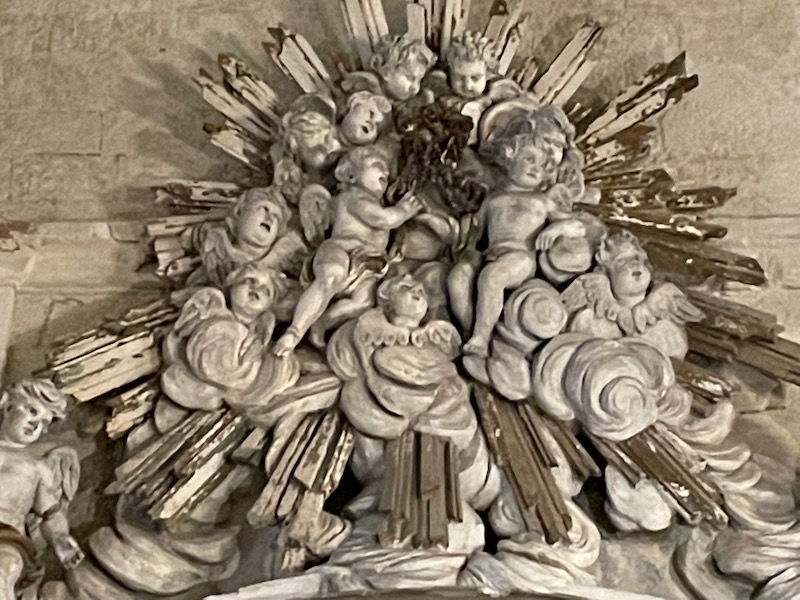
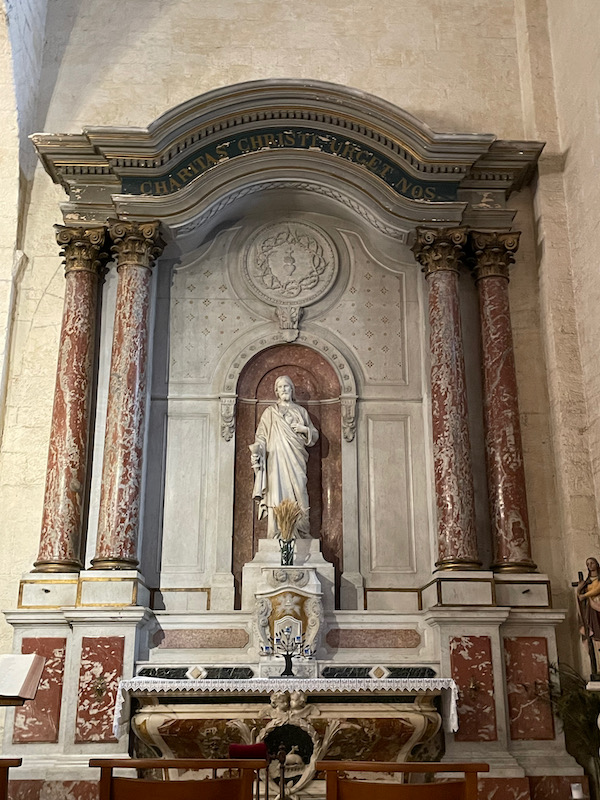
One oddity is that the church has a wooden ceiling, which dates from the end of the 20th century. You can see it on the first couple interior pictures, and here is a bit of the detail.
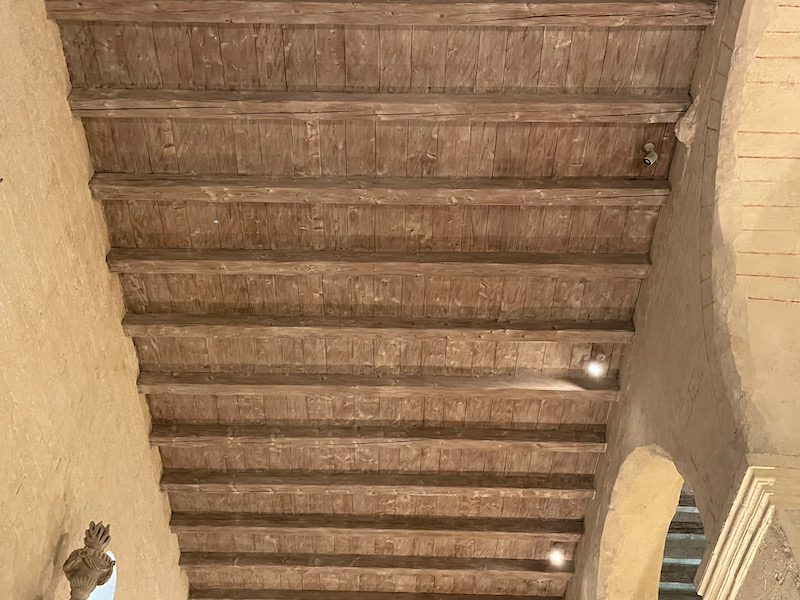
Just a couple pictures of the stained glass windows.
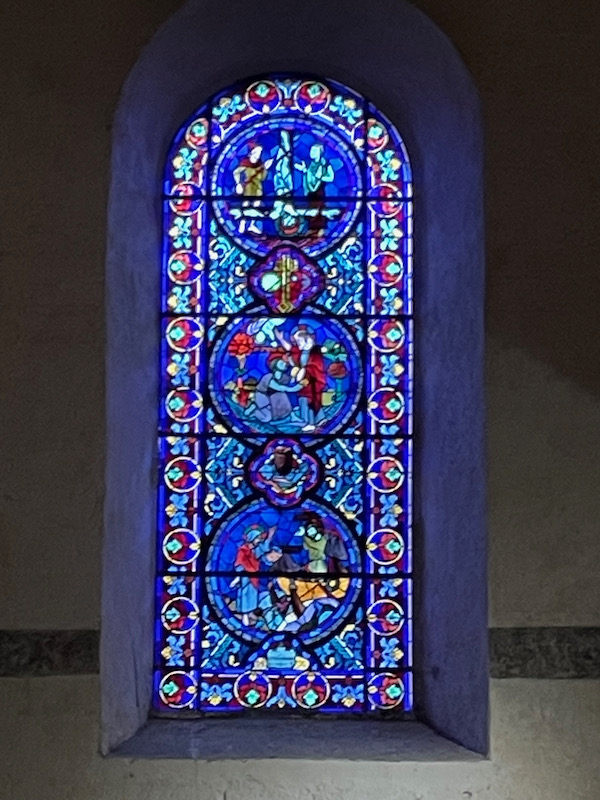
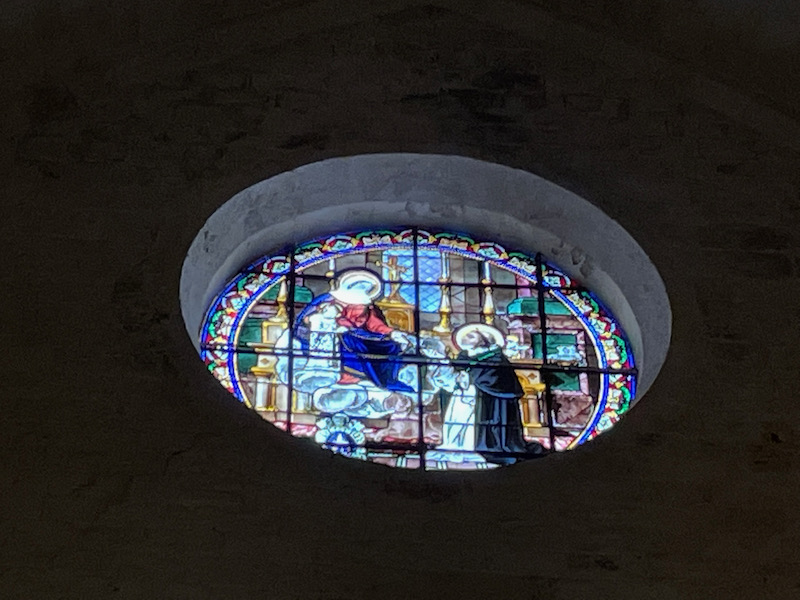
In the square next to the church was this nice fountain.
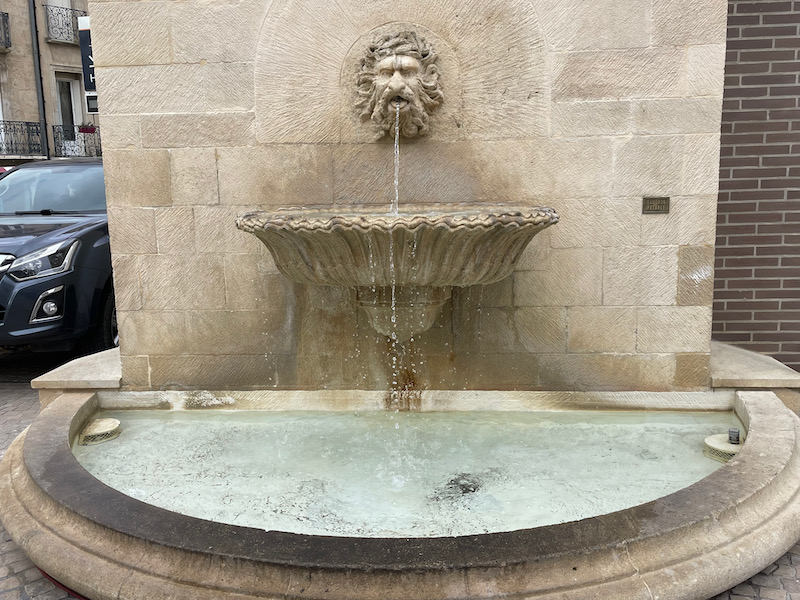
The Halles de Béziers was built in 1891 in the Baltard type (like the old marché of Paris). In the Middle Ages, the Saint-Félix church was here but it was razed in 1815 and became a cemetery for the needy. Under mayor Alphonse Mas, there was a bunch of building in the Haussmannian style, including the creation of the halls. Today, they are home to 21 stalls of local traders and producers.
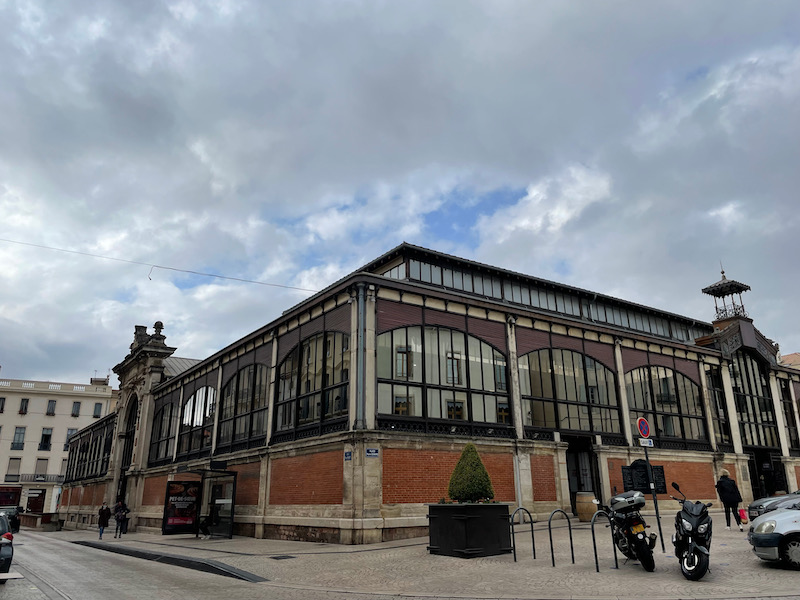
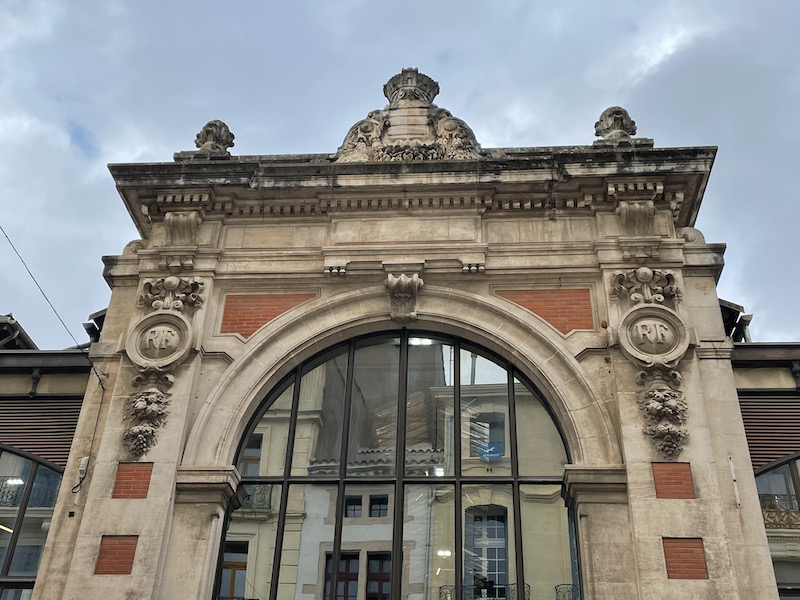
We were lucky enough to catch a little protest coming down the street, mostly protesting the vaccine pass (the church of Saint-Madeleine is in the background).
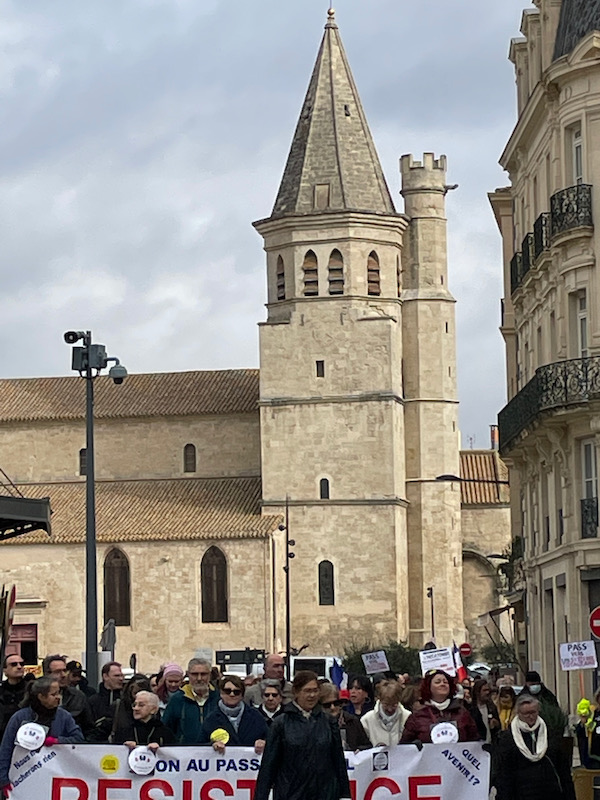
The Hôtel de Ville sits on one side of the square of the old forum. The Roman forum was built at the intersection of the "cardo" and the "decumanus", the north-south and east-west axes of the city. A Post office building was here until around 2013, when it was taken down and the place was revived. There are several nice 17th, 18th and 19th century building facades around the square.
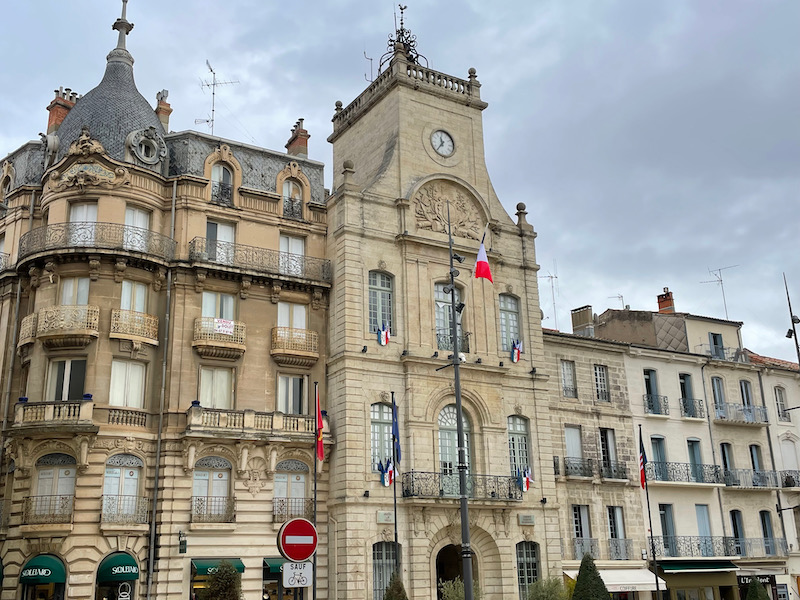
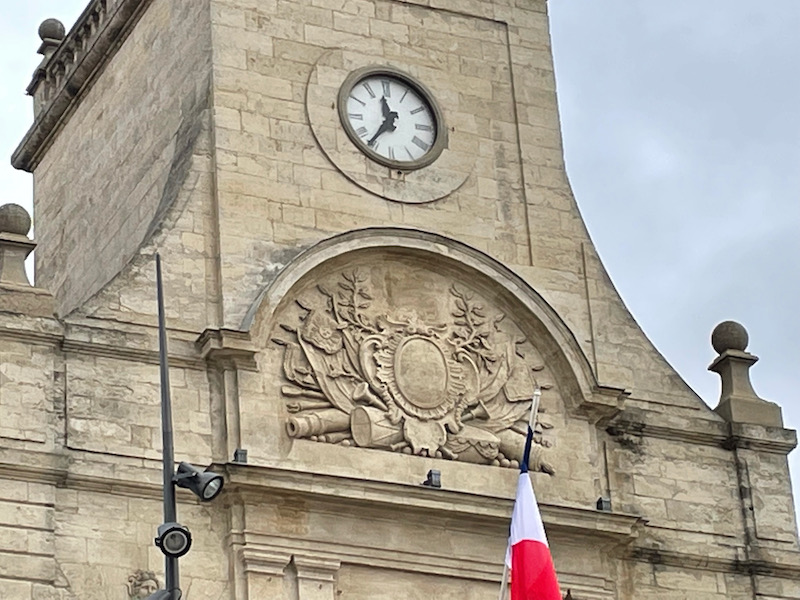
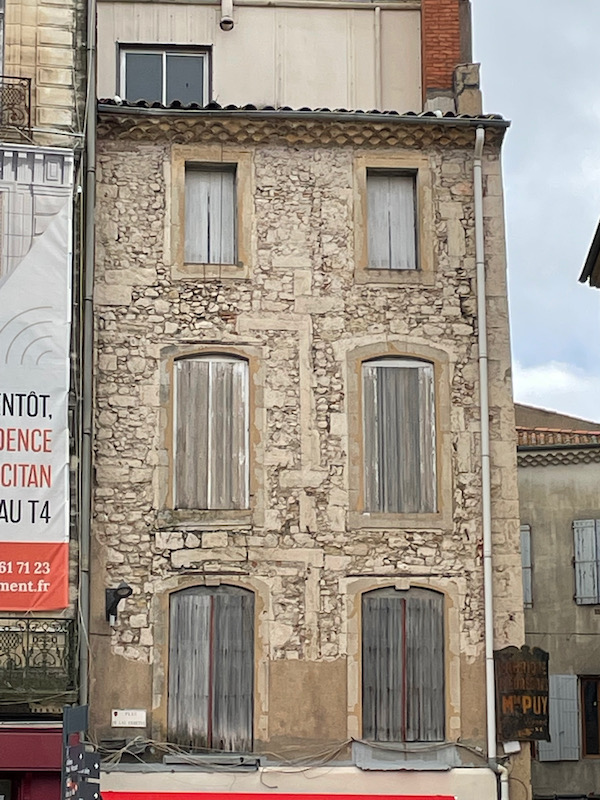
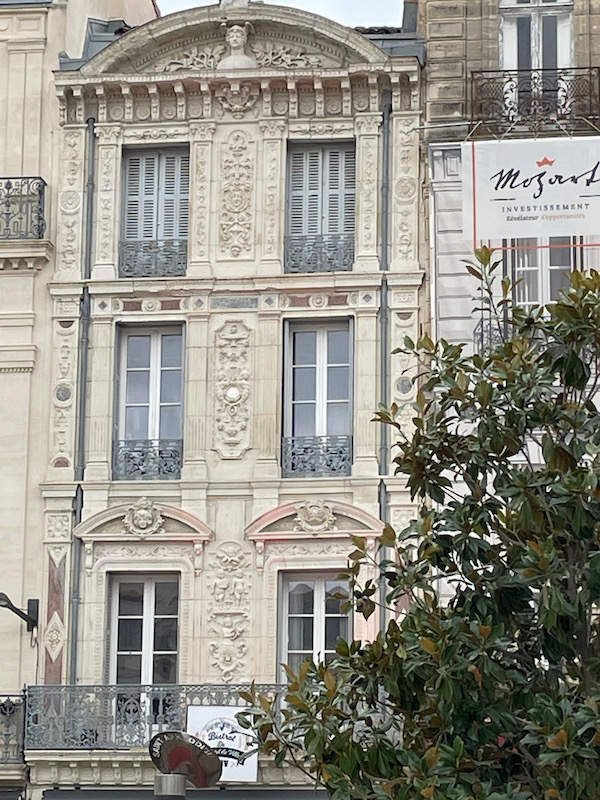
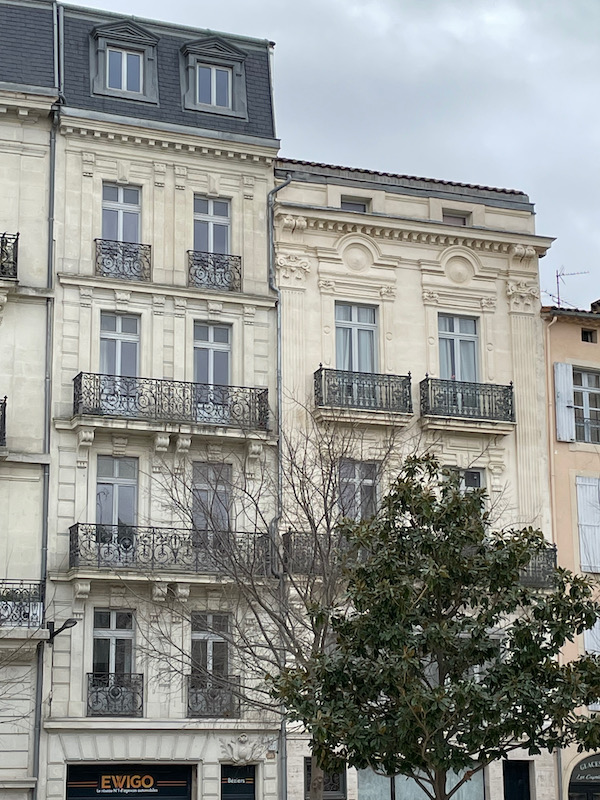
There are few interesting buildings around town ... in some places, you can see the remnants of medieval buildings (in the case of the 2nd picture, the arch on the ground floor and windows on the 1st floor have been closed up).
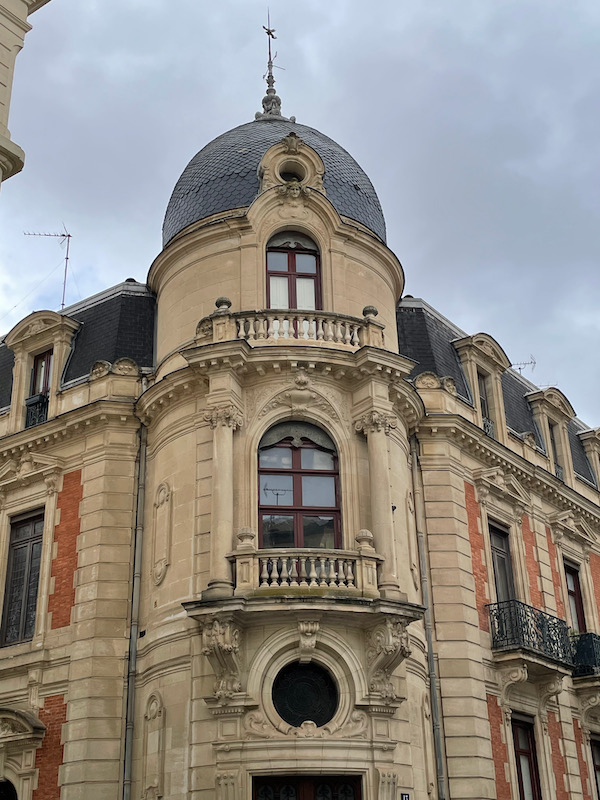
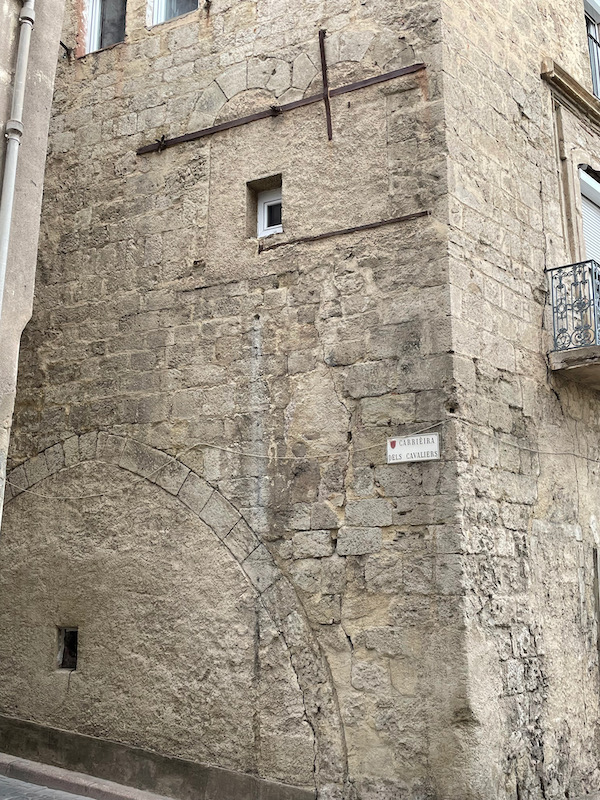
Saint Aphrodisius was said to be the Bishop of Béziers in the 1st century. The governor sentenced him to death due to his activities and he was beheaded. His head was thrown into a well but the head immediately came back out. The Saint got up, grabbed his head, and walked towards the city with his detached head in his hands. Place Saint-Cyr is supposedly the place where he was beheaded, and this is remembered with a statue of the Saint, holding his head, in a little niche.
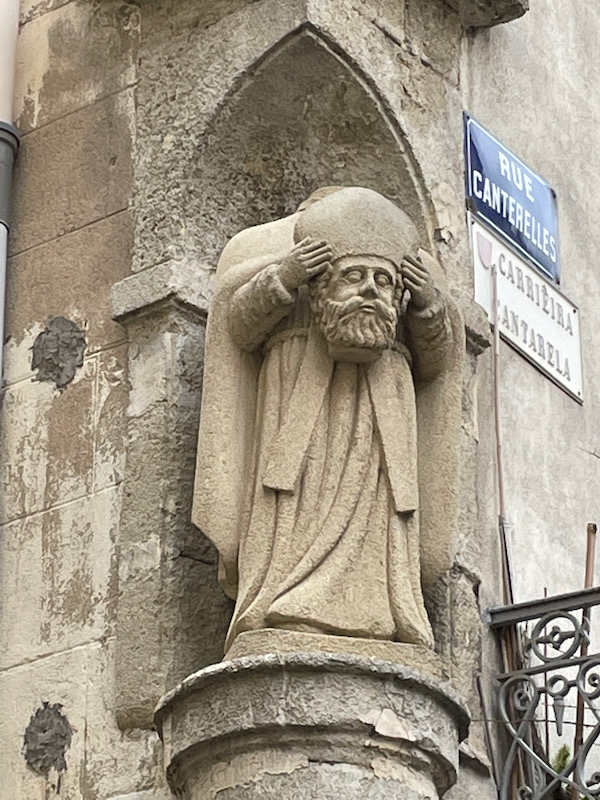
Built in 80 AD on Saint-Jacques hill, the Roman amphitheater of Béziers was able to accommodate up to 13,000 spectators. Only a few remnants remain, which were found in 1992. Unfortunately, it is not open during the winter and so I could only grab some pictures through the fence.
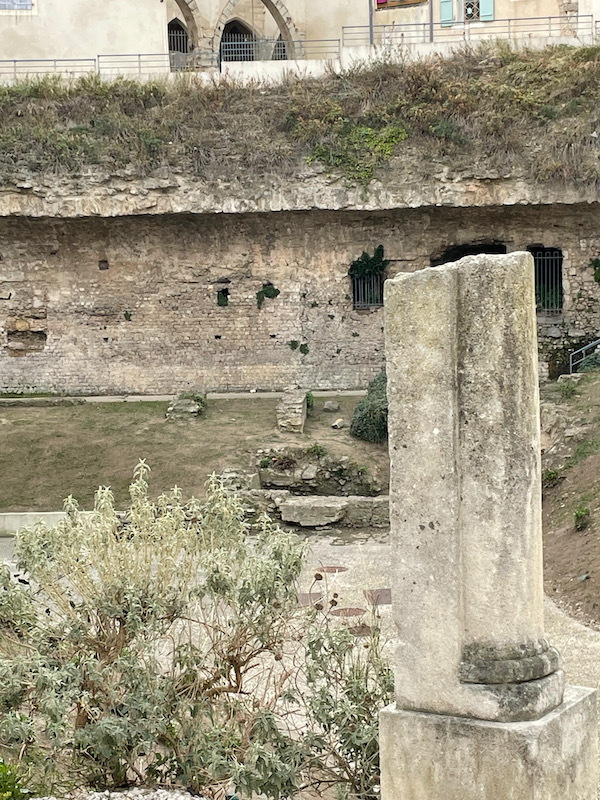

There 16 frescoes around town that tell the history of Béziers, including this one for the Molière play entitled "Le Dépit Amoureux" that he created in Béziers in 1656.
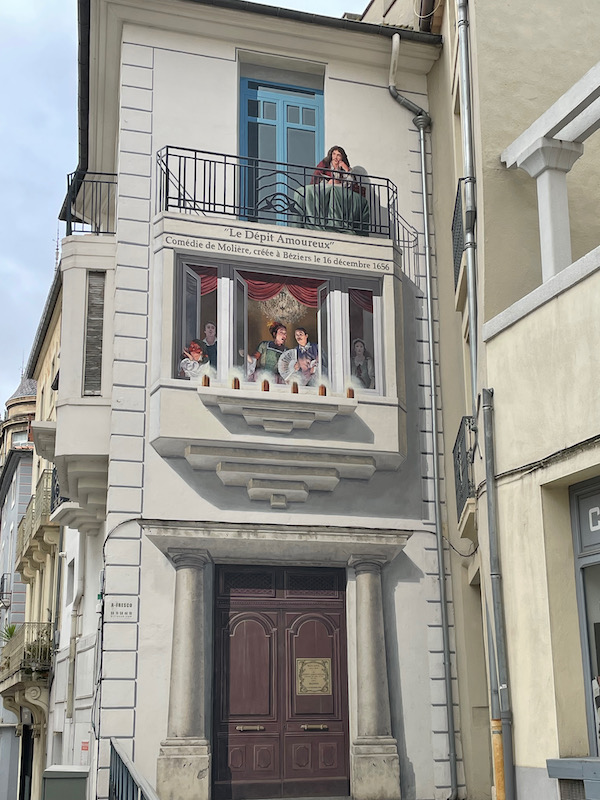
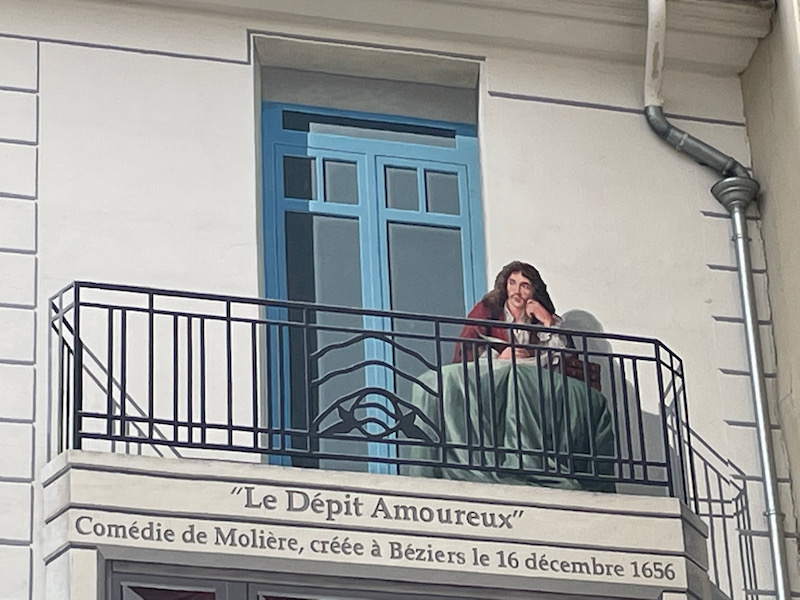
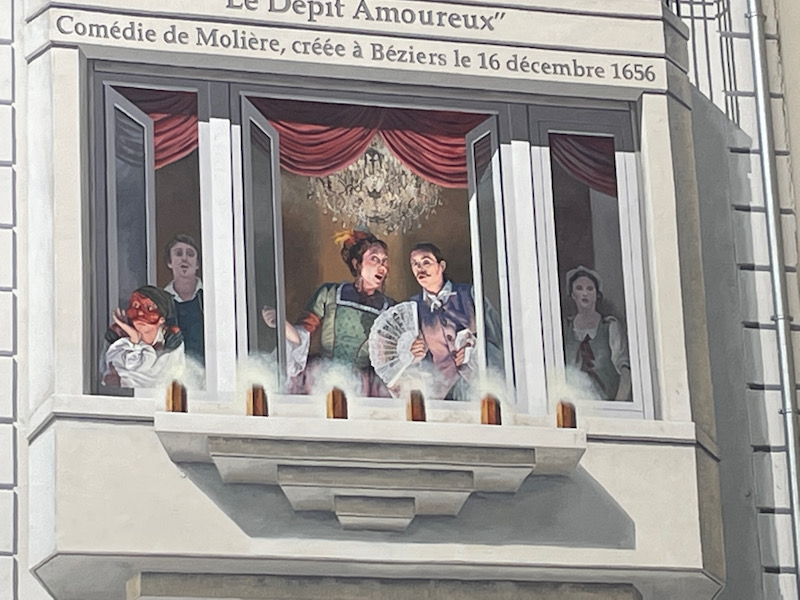
This fresco shows the 1907 revolt of the winemakers, we had learned a little bit about during our visit to Narbonne a few months ago. In March 1907, an unprecedented wine crisis shook the region with falling prices, fraud, and sugaring of the wine, which plunged the winegrowers in misery. Winemaker Marcelin Albert (shown upstairs on the balcony), launched a campaign with politicians, punctuated by demonstrations. The movement of 87 winegrowers reached its peak on June 9, 1907 with the largest demonstration of the Third Republic: more than 600,000 people demonstrated in Montpellier. The revolt was repressed with 6 people being killed in Narbonne when the army fired on the crowd. In Béziers, on the other hand, the 17th Regiment of Infantry refused to "shoot on its own" and laid down their bayonets. But the revolt of the winegrowers succeeded in making it possible to pass laws regulating the production and the quality of the wine.
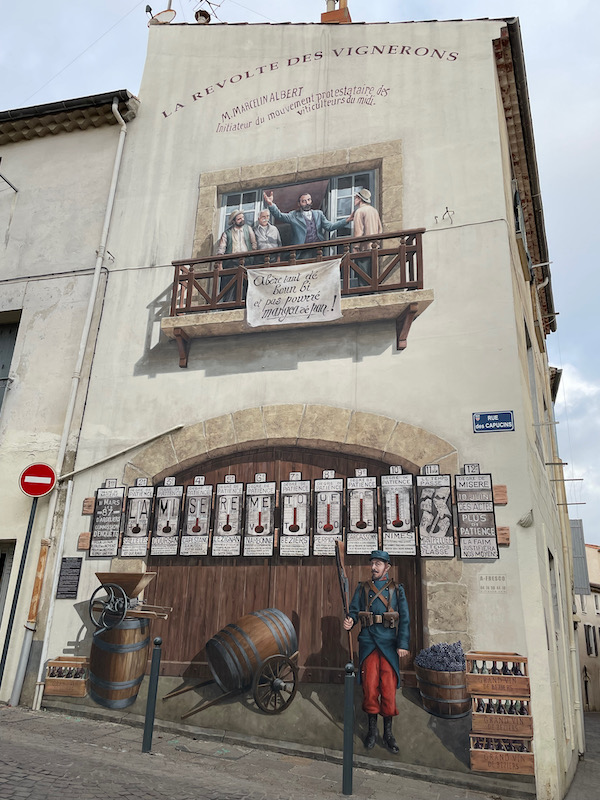
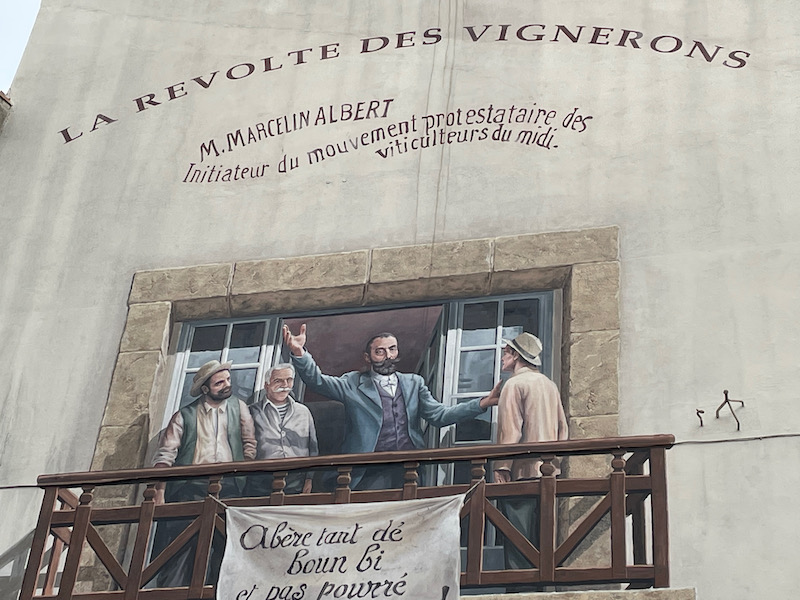
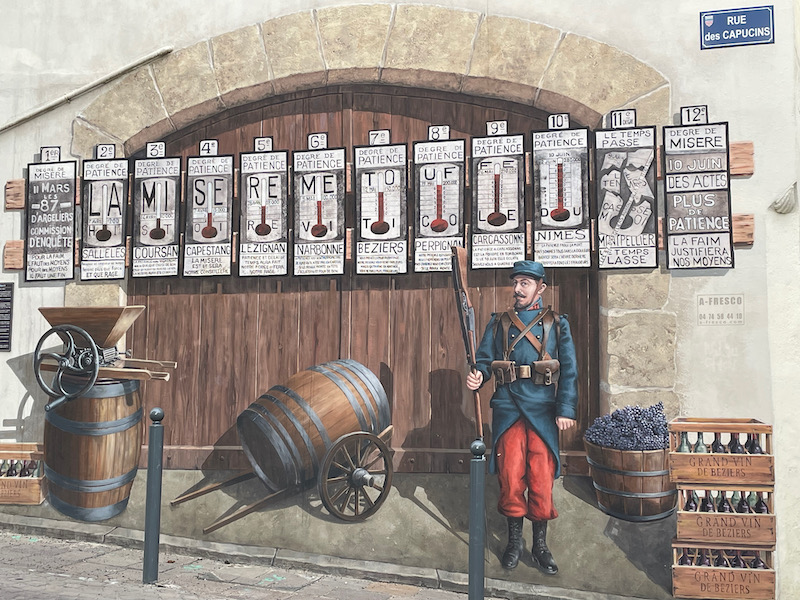
Another fresco, this one showing Jean Antoine Injalbert, a sculptor who was born in Béziers in 1845. He has quite a few "known" works, including tympanum depicting the city of Paris surrounded by muses on the entrance to the Petit Palais in Paris and four allegorical figures of The City of Paris, Navigation, Commerce, and Abundance on the Pont Mirabeau in Paris.
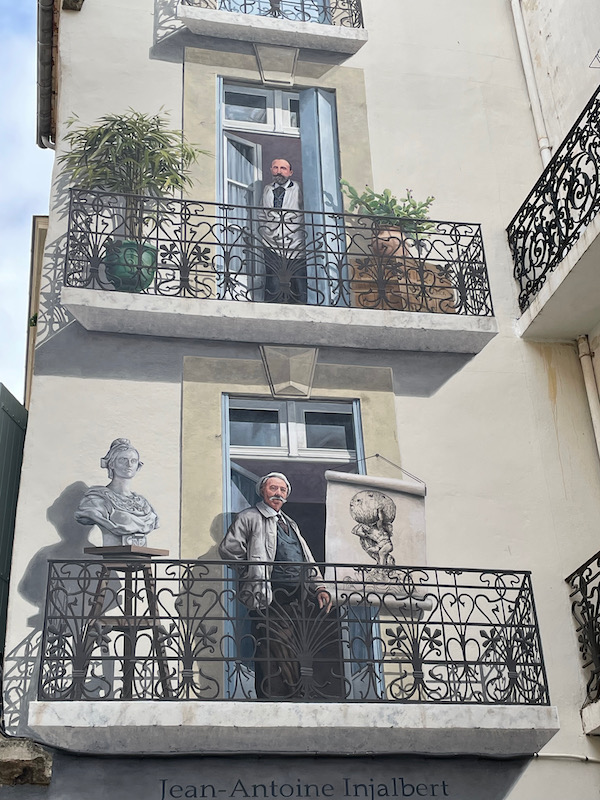
In front of the Cathedral, I saw this statue showing Joan of Arc (Jeanne d'Arc in French) which was very different than the other statues of Joan of Arc. Normally, she is shown victorious in a suit of armor .. but here, we see here in just a flowing dress, tied up by ropes and with the stacks of wood below her. This is the first time I have seen a statue of her showing her being burned at the stake.
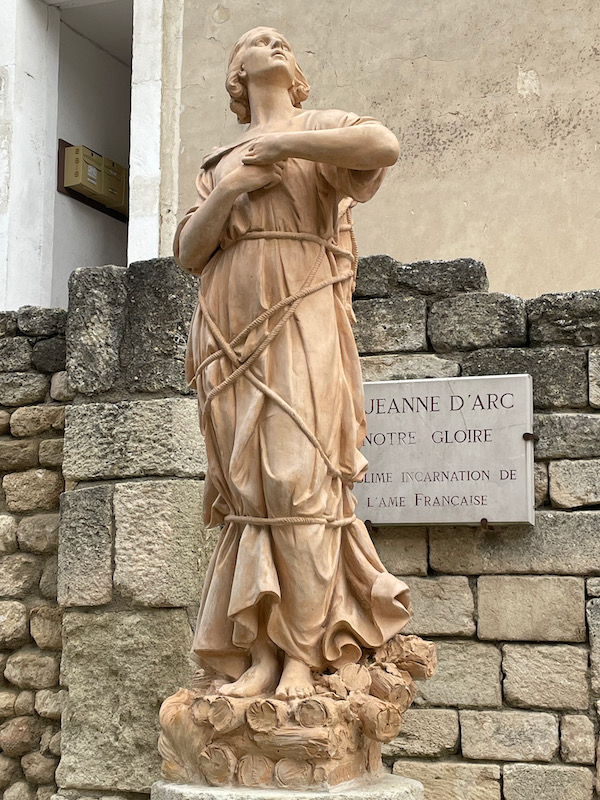
There is a promenade along the upper part of the town, where the Cathedral is, that overlooks the plains below. You can also see an old bridge next to an open-air theater.
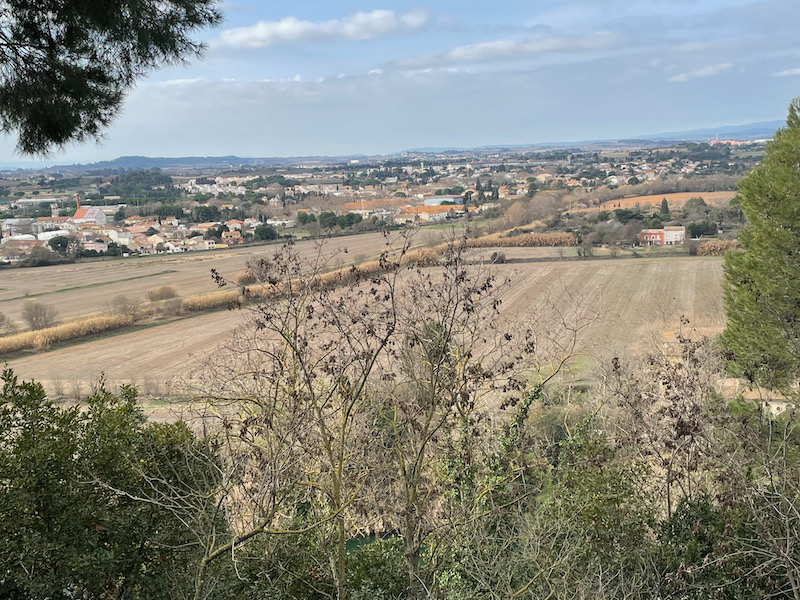
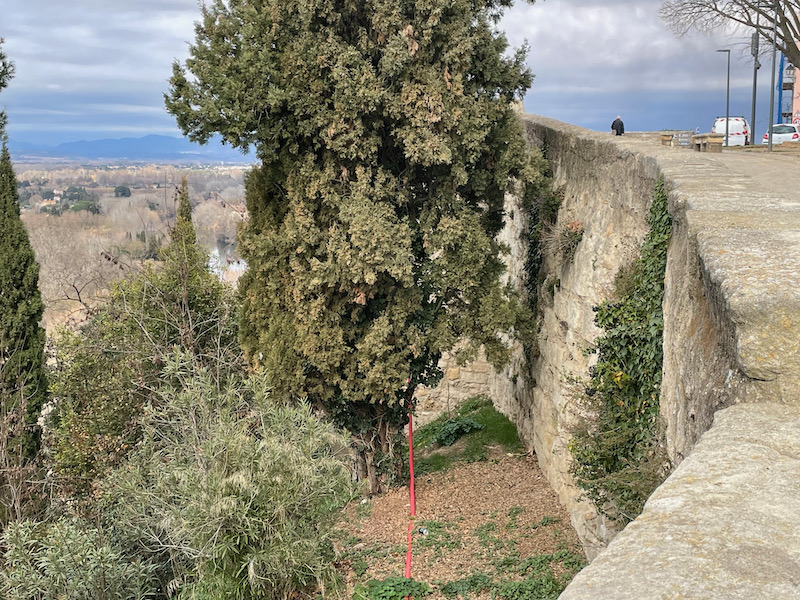
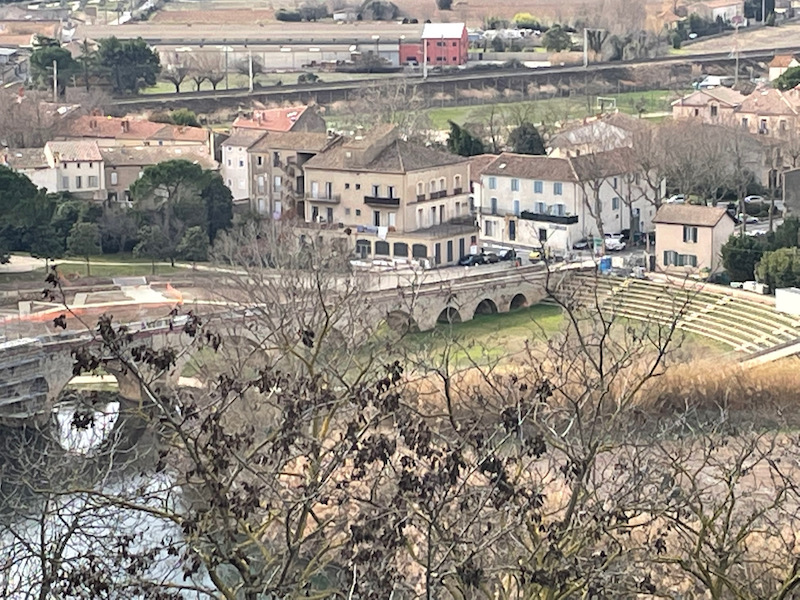
Cathedral Saint-Nazaire, but it was closed for lunch so we couldn't go inside (next time). It was built on the remains of a Roman temple dedicated to the Emperor Augustus, which you can see a few elements from in the crypt. Its base is almost all that remains of the Romanesque cathedral built in the 12th century, destroyed by the troops of Simon de Montfort in 1209. The cathedral was rebuilt in the Gothic style in the 13th century.
